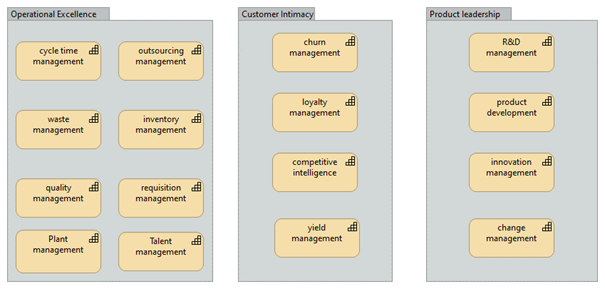A generic model for primary processes
Every organisation is unique but most
organisations share some basic principles in the way they operate. Business
processes have some form (between 5 and 100%) of support by online transaction
systems (OLTP). Business drivers like consumer demand, government regulations,
special interest groups, technological evolutions, availability of raw
materials and labour and many others influence the business processes intended
to deliver a product or service that meets market demand within a set of
constraints. These constraints can range from enforcing regulatory bodies to
voluntary self-regulation and measures inspired by public relations objectives.
This is a high level approach of how AI can
support business processes
 |
| High level generic architecture |
Business
drivers are at the basis of business processes to realise certain business
goals and delivering products for an internal or external customer. These processes are supported by applications,
the so-called online transaction processing (OLTP) systems.
Business
process owners formulate an a priori scoring model that is constantly adapted
by both microscopic transaction data as well as historic trend data from the
data warehouse (DWH). Both data sources can blend into decision support data,
suited for sharply defined data requirements as well as vague assumptions about
their value for decision making. The
decisions at hand can be either microscopic or macroscopic.
Introducing AI in the business processes
As an architect one of the first decisions to
make is whether and when AI becomes relevant enough to become part of routine
business processes. There are many AI initiatives in organisations but the
majority is still in R & D mode or –at best- in project mode. It takes special skills to determine when the
transition to routine process management can provide some form of sustainable
added value.
I am not sure if these skills are all
determined and present in the body of knowledge of architects but here are
some proposals for the ideal set of competences.
- A special form of requirements management which you can only master if the added value as well as the pitfalls of AI in business processes are thoroughly understood,
- As a consequence, the ability to produce use cases for the technology,
- Master the various taxonomies to position AI in a correct way to make sure you obtain maximum value from the technology (more on this in a next post),
- Have clear insights in the lifecycle management of the various analytical solutions in terms of data persistency, tuning of the algorithm and translation into appropriate action(s).
In the next post, I will elaborate a bit more
on the various taxonomies to position AI in the organisation.
